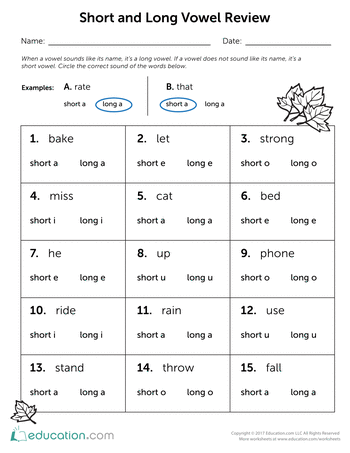
Beginning Reading Design: Needing Heat with Pete
Rationale: This lesson will help children identify /E/, the phoneme represented by ee or ea. Students will learn to recognize /E/ in spoken words by learning a sound analogy (a creaking door), practice finding /E/ in words, and apply phoneme awareness with /E/ in phonetic cue reading by distinguishing rhyming words from beginning letters.
Materials:
-
Primary paper
-
Pencils
-
Chart with "Eagles eat electric eels easily.”
-
Lee and the Team (Phonics Readers, Long Vowels)
-
Word cards with BEAD, CHEESE, NEED, PEA, MEET, and LEAD
-
Assessment worksheet reviewing long vowels.
Procedures: Introduction: 1. Say: Our written language is a secret code. The tricky part is learning what letters stand for—the mouth moves we make as we say words. Today we're going to work on spotting the mouth move /E/. We spell /E/ with letters ee or ea and /E/ sounds like an old, creaking door.
Activities: 2. Let's pretend to close a creaking door, /E/, /E/, /E/. [Pantomime a creaking door closing] Notice where your bottom teeth are? (Touching lower lip). When we say /E/, we stretch our lips into a funny face.
3. Let me show you how to find /E/ in the word cheese. I'm going to stretch cheese out in super slow motion and listen for my creaking door. Ch-e-e-se. Slower: Ch-e-e-e-se. There it was! I felt my lips stretch into a funny face. Creaking door /E/ is in cheese.
4. Let's try a tongue tickler [on chart]. Eagles eat electric eels easily. The eagles at Eastwood Zoo have been very hungry. They normally eat fish, but their pond ran out. Their zookeeper found them some eels. These eels are special though, as they are electric. Since they are so hungry, the eagles eat the electric eels easily. Here’s our tickler: "Eagles eat electric eels easily.” Everybody say it three times together. Now say it again, and this time, stretch the /E/ at the beginning of the words. "Eeeeagles eeeat eeeeelectric eeeels eeeasily." Try it again, and this time break it off the word: "/E/ agles /E/ at /E/ lectric /E/ els /E/ asily.
5. [Have students take out primary paper and pencil]. We use ee or ea to spell /E/. I want to see everybody's write these letters. After I put a smile on it, I want you to make nine more just like it.
6. Call on students to answer and tell how they knew: Do you hear /E/ in Tree or forest? Cheese or milk? Meat or vegetable? Bee or fly? Beat or tap? Say: Let's see if you can spot the mouth move /E/ in some words. Creak your doors if you hear /E/: meet, feet, bed, mess, treat, trick, feet.
7. Say: "Let's look at a book. Lee is in charge of a baseball team. His team is late for a game!” Read the book and ask students what other teams Lee could lead. What could Lee’s friends’ names be? Have students write sentences about these friends and teams and display student work.
8. Show BEAD and model how to decide if it is bead or bed: The ea tells me to creak my door, /E/, so this word is b-eeeaaa-d, bead. You try some: CHEESE: cheese or chess? NEED: net or need? PEA: pea or pet? MEET: meet or met? LEAD: lead or led?
9. For the letterbox lesson, I will begin with a phenome awareness lesson for /E/, “his free feet are on the street!” using a gesture mimicking an “e” in ASL. We will use a tongue tickler: Eagles eat electric eels easily. I will then ask the class if they hear /E/ in feet or hand? Street or road? Knee or elbow? Then we will have a letterbox lesson with ee = /E/ as the goal. Words are: 2 phonemes [eel, knee]; 3 phonemes [feet, meet, need, beep, sheep]; 4 phenomes [green, tweet, speed] Letters: e, l, k, n, f, t, m, d, b, p, s, h, g, r, w
10. For assessment, distribute the worksheet. Students decide if a word contains a long or short vowel sound.
Reference: Wallach and Wallach’s Tongue Ticklers: http://wp.auburn.edu/rdggenie/home/materials/ticklers/
Lee and the Team by Phonics Readers, Long Vowels
Education.com worksheet https://www.education.com/worksheet/article/long-and-short-vowel-review/
